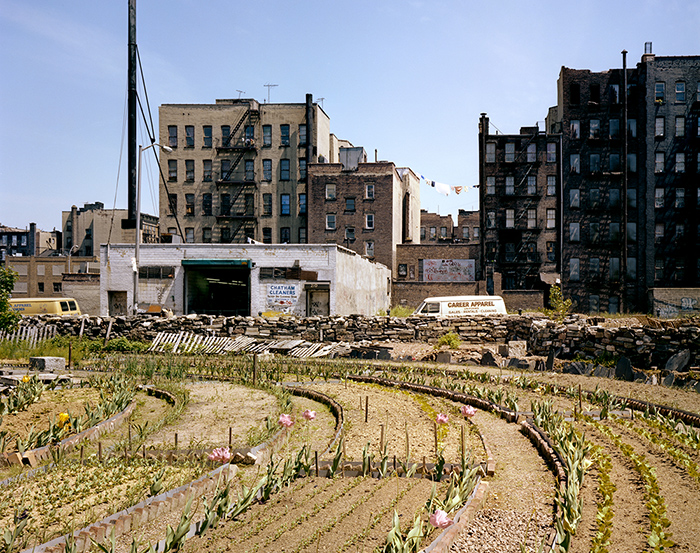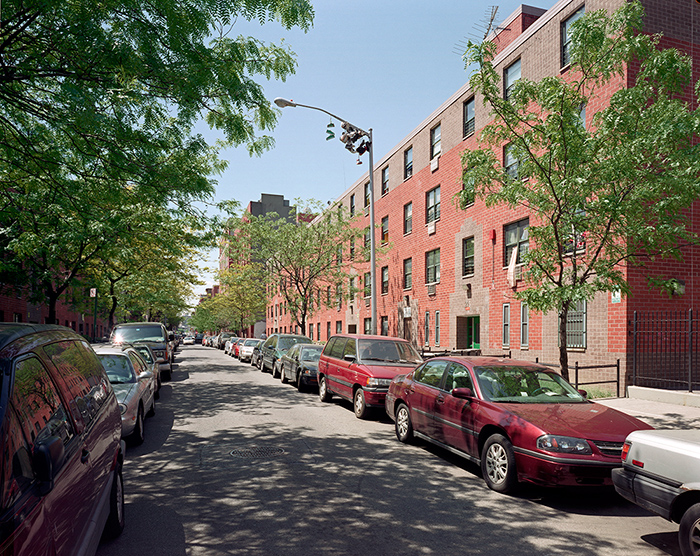
The Garden of Eden on Eldridge Street, 1980 — © Brian Rose/Edward Fausty
I knew about Adam Purple back when I photographed the Lower East Side in 1980. He was impossible to miss riding around on his bicycle dressed in tie-dyed purple. I made the photograph above of his famous Garden of Eden, which consisted of concentric rings planted with flowers and vegetables.
Purple was an eccentric character, to say the least, and from what I could tell, a man of rather severe temperament. So I steered clear. But that was a superficial judgement for sure. We all thought his garden was amazing, carved into the rubble of one of the many vacant lots of the Lower East Side, one of the many individual and group efforts to reclaim land that had been abandoned by property owners.
Later, in the 80s, Purple’s creation became caught up in a range war like the cattlemen and the sheepherders out west. The housing activists wanted low income housing, and the garden activists wanted community gardens and green spaces. Adam Purple was a single minded gardener and an artist — and he wasn’t interested in building bridges with other political elements of the community. That was the downfall of the Garden of Eden, though I don’t blame him for it. He was who he was.

Eldridge Street 2010 — © Brian Rose
Above is what got built on Adam Purple’s Garden of Eden. It isn’t lovely. It is low income housing providing shelter for dozens of families. There are no shops built along the street to provide opportunity for small businesses and to bring life to the neighborhood, and there is barely any architecture to speak of. But the apartments are decent and affordable, and the area is safe and convenient to everything.
Imagine, if you will, a different scenario in which a sensitively designed complex of affordable housing was created embracing the Garden of Eden at its center. It could have been glorious. But it would have taken vision, something the housing activists and the city planners lacked. And I’m not sure that Adam Purple with his fierce independence would have gone along anyway. After vanishing for many years, Adam Purple was seen again on his bicycle around town, carrying cans and the like for recycling. He died on his bike on the Williamsburg Bridge.
Therefore the LORD God sent him forth from the garden of Eden, to till the ground from whence he was taken.